What Is The Worst Hurricane In History? This devastating question seeks to uncover the most catastrophic storms ever recorded, examining the factors that contribute to their destructive power. At WHAT.EDU.VN, we provide comprehensive information and insights into extreme weather events. Discover the facts about the worst hurricanes, including their impact, causes, and long-term effects. Learn about historical storms, meteorological events, and disaster preparedness to stay informed and safe.
Table of Contents
- 1.1 What is a Hurricane?
- 1.2 How Hurricanes Form
- 1.3 The Saffir-Simpson Hurricane Wind Scale
- 1.4 Factors Influencing Hurricane Intensity
2. Defining the “Worst” Hurricane
- 2.1 Death Toll
- 2.2 Economic Impact
- 2.3 Geographical Scope of Damage
- 2.4 Long-Term Environmental Effects
- 2.5 Social and Cultural Disruption
3. The Great Galveston Hurricane of 1900
- 3.1 Historical Context
- 3.2 The Day of the Storm
- 3.3 Immediate Aftermath and Recovery Efforts
- 3.4 Lessons Learned and Infrastructure Improvements
- 3.5 Galveston Today
4. Other Historically Devastating Hurricanes
- 4.1 Hurricane Maria (2017)
- 4.2 The Okeechobee Hurricane of 1928
- 4.3 Hurricane Katrina (2005)
- 4.4 Chenière Caminada Hurricane (1893)
- 4.5 Sea Islands Hurricane (1893)
- 4.6 Georgia/South Carolina Hurricane (1881)
- 4.7 Hurricane Audrey (1957)
- 4.8 Labor Day Hurricane (1935)
- 4.9 Last Island Hurricane (1856)
- 5.1 Warmer Sea Temperatures
- 5.2 Sea Level Rise
- 5.3 Changes in Hurricane Frequency and Intensity
- 5.4 Climate Change Mitigation and Adaptation
6. Predicting and Preparing for Hurricanes
- 6.1 Advancements in Forecasting Technology
- 6.2 Early Warning Systems
- 6.3 Community Preparedness Plans
- 6.4 Individual and Family Preparedness
7. Long-Term Impacts and Recovery
- 7.1 Infrastructure Repair and Reconstruction
- 7.2 Economic Recovery
- 7.3 Mental Health and Community Support
- 7.4 Environmental Restoration
8. Frequently Asked Questions (FAQs)
- 8.1 What makes a hurricane “the worst”?
- 8.2 Has climate change affected hurricane intensity?
- 8.3 How can communities better prepare for hurricanes?
- 8.4 What are the signs of a hurricane?
- 8.5 How do hurricanes get their names?
- 8.6 What is a storm surge?
- 8.7 What is the difference between a hurricane, a typhoon, and a cyclone?
- 8.8 What role do levees play in protecting cities from hurricanes?
- 8.9 What are the psychological effects of surviving a major hurricane?
- 8.10 Where can I find reliable information about current and past hurricanes?
9. Resources for Further Learning
1. Understanding Hurricanes
To truly grasp what constitutes the worst hurricane in history, it’s essential to understand the basic science behind these powerful storms.
1.1 What is a Hurricane?
A hurricane is a type of tropical cyclone, a rotating, organized system of clouds and thunderstorms that originates over tropical or subtropical waters and has a closed low-level circulation. Hurricanes are characterized by strong winds and heavy rainfall. In the Atlantic and Northeast Pacific, they are called hurricanes; in the Northwest Pacific, they are known as typhoons; and in the South Pacific and Indian Ocean, they are called cyclones.
1.2 How Hurricanes Form
Hurricanes require specific conditions to form and intensify:
- Warm Ocean Waters: Hurricanes need warm ocean waters (at least 80°F or 27°C) to provide the necessary heat and moisture.
- Atmospheric Instability: Unstable atmospheric conditions allow for the development of thunderstorms.
- Low Vertical Wind Shear: Low wind shear (the difference in wind speed and direction over a short distance) allows the storm to remain organized.
- Sufficient Coriolis Force: The Coriolis force, caused by the Earth’s rotation, is necessary for the storm to rotate. This is why hurricanes rarely form within 5 degrees of the equator.
- Pre-existing Disturbance: A pre-existing weather disturbance, such as a tropical wave, can provide the initial focus for hurricane development.
1.3 The Saffir-Simpson Hurricane Wind Scale
The Saffir-Simpson Hurricane Wind Scale classifies hurricanes based on their maximum sustained winds. This scale estimates potential property damage. The scale ranges from Category 1 to Category 5:
| Category | Wind Speed (mph) | Potential Damage |
|---|---|---|
| Category 1 | 74-95 | Minimal damage: damage to shrubbery, trees, and unanchored mobile homes. |
| Category 2 | 96-110 | Moderate damage: damage to roofing materials, doors, and windows. |
| Category 3 | 111-129 | Extensive damage: structural damage to small residences and utility buildings. |
| Category 4 | 130-156 | Extreme damage: complete roof failure on many residences. |
| Category 5 | 157+ | Catastrophic damage: a high percentage of framed homes will be destroyed, with total roof failure and wall collapse. |
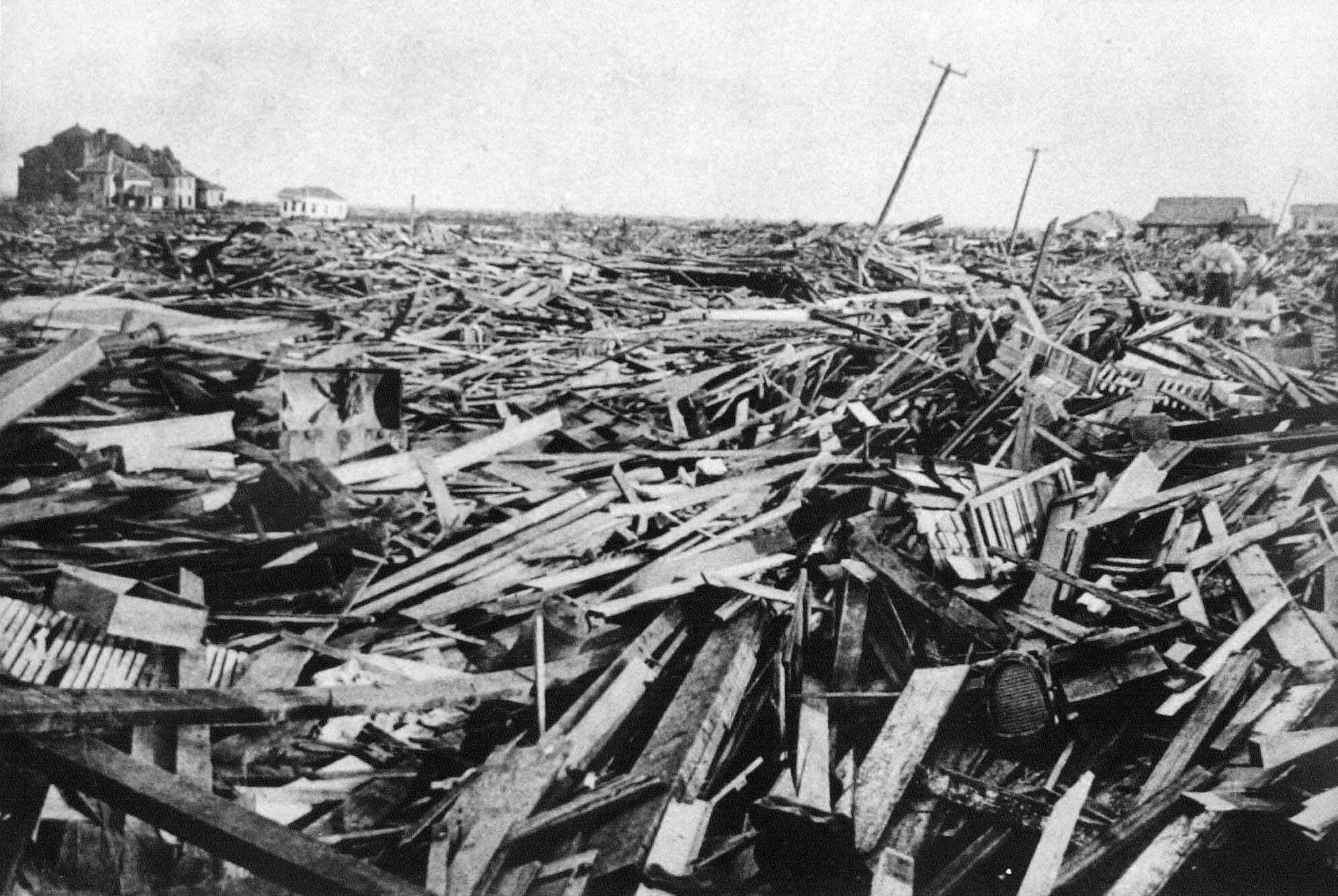
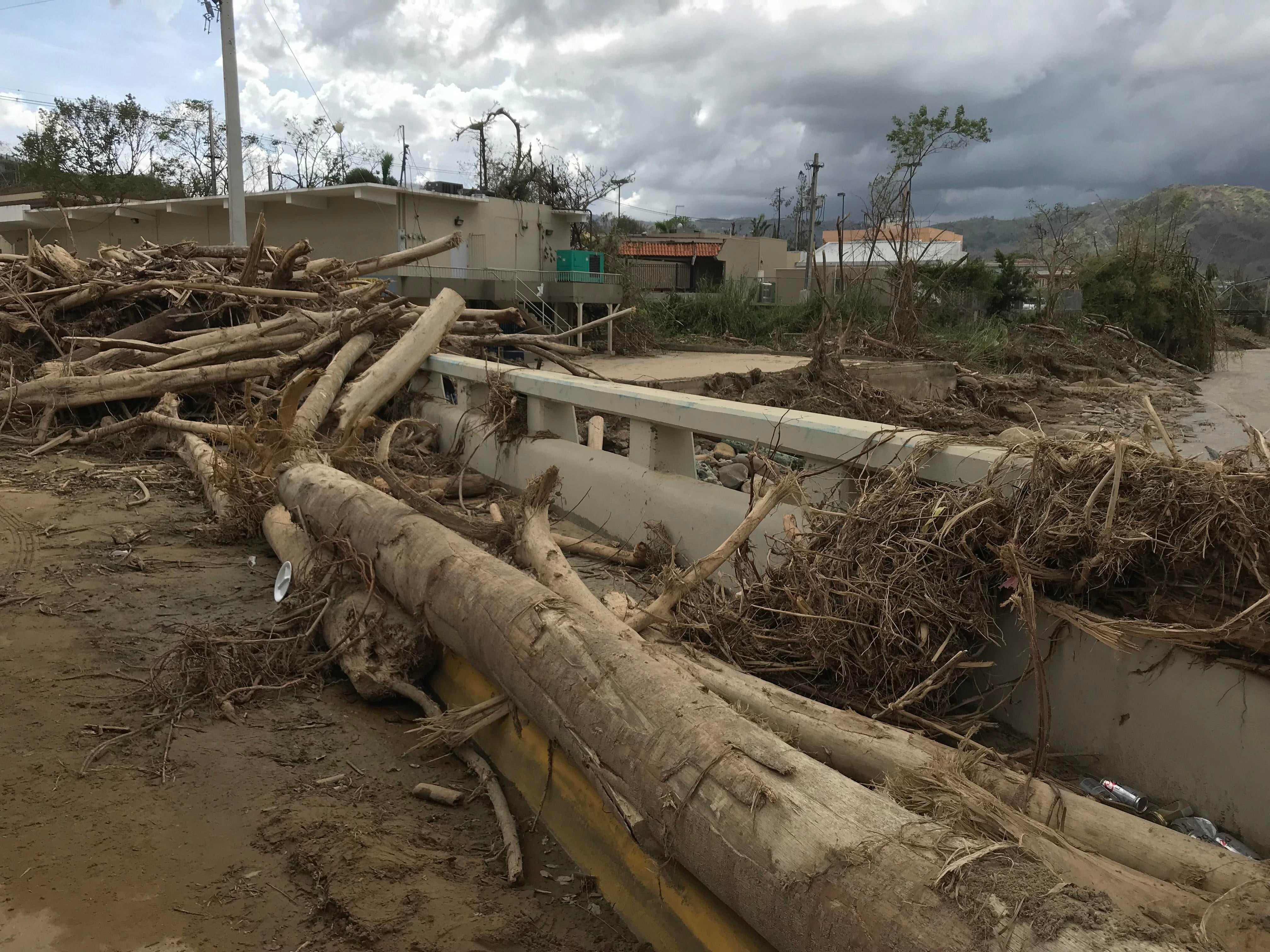
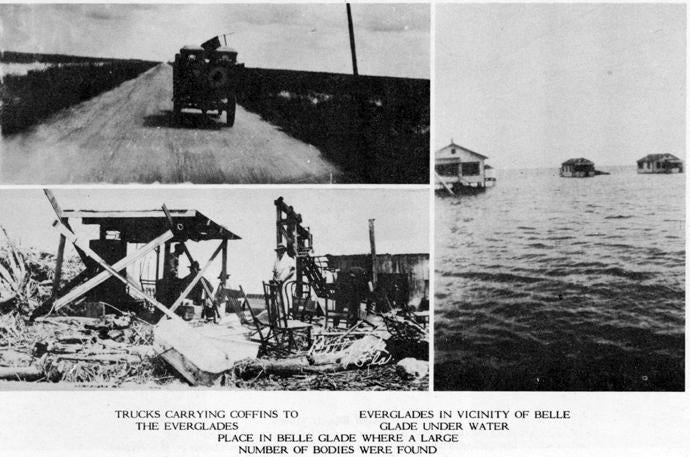
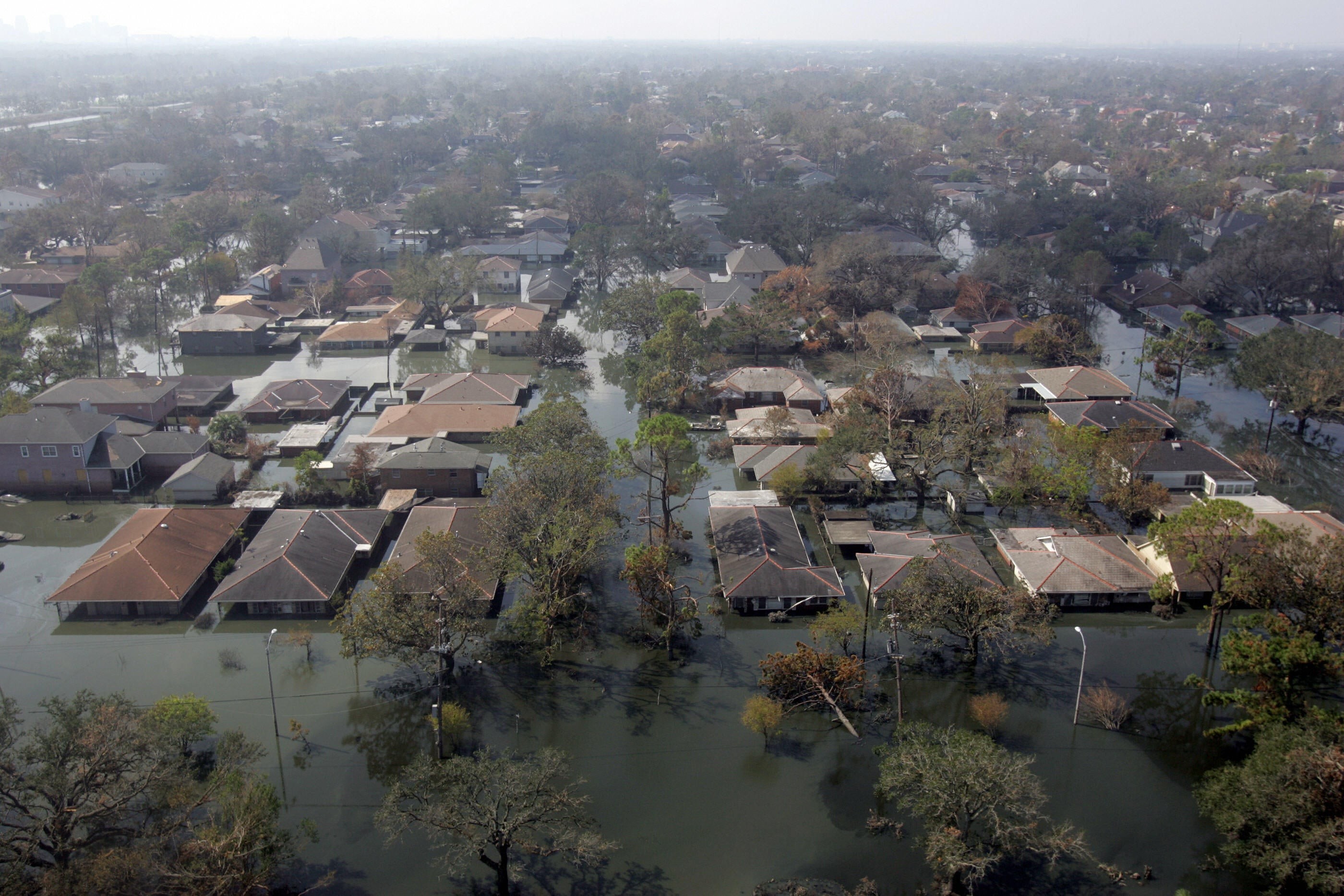
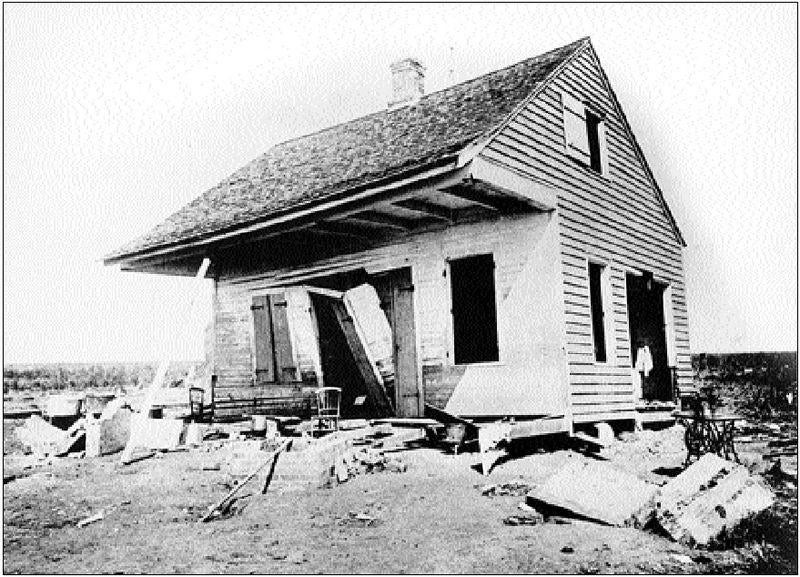
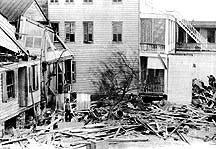
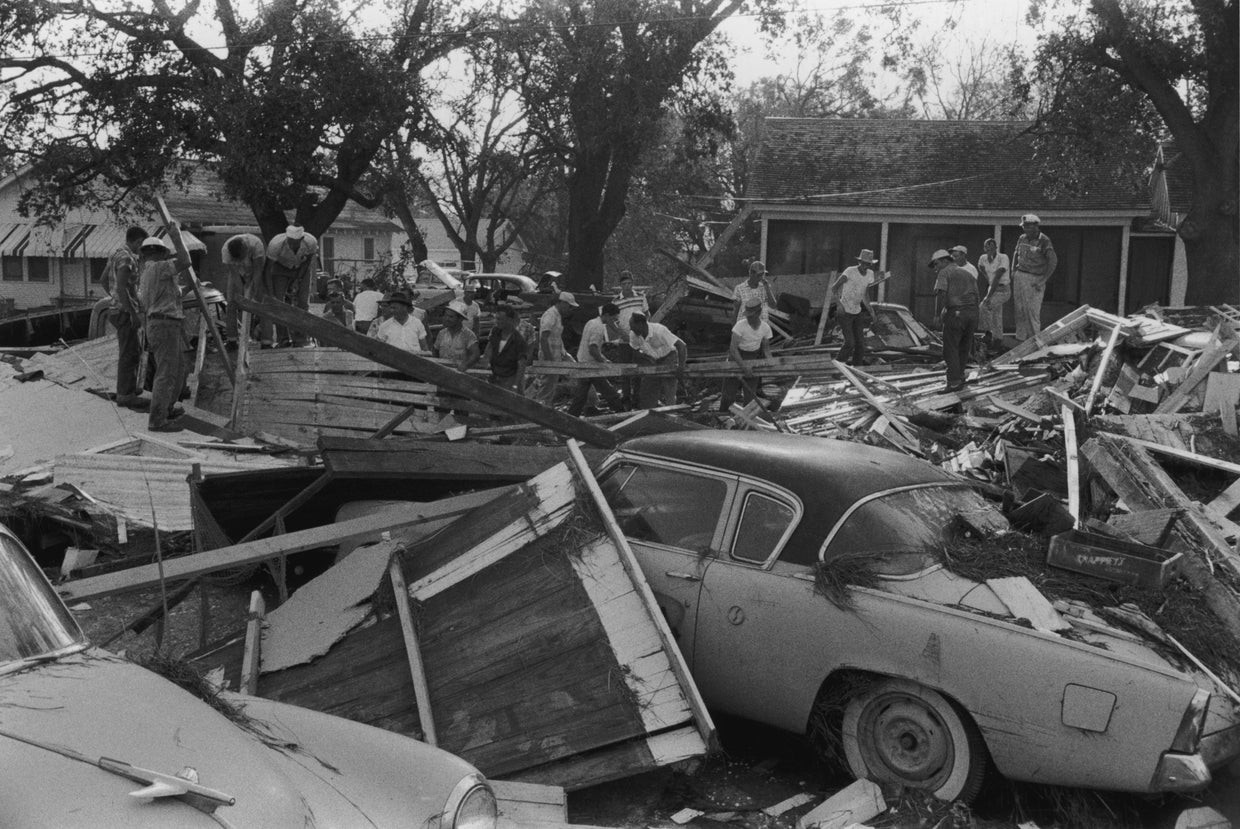

1.4 Factors Influencing Hurricane Intensity
Several factors can influence the intensity of a hurricane, including:
- Sea Surface Temperature (SST): Higher SSTs provide more energy for the storm.
- Atmospheric Conditions: Low wind shear and a moist atmosphere can help a hurricane strengthen.
- Land Interaction: Landfall weakens hurricanes as they lose their source of moisture and encounter friction.
- Upper-Level Divergence: Favorable upper-level wind patterns that allow air to rise can enhance hurricane development.
2. Defining the “Worst” Hurricane
Determining the “worst” hurricane in history isn’t as simple as looking at wind speeds alone. Several factors contribute to a hurricane’s overall impact, and different metrics can lead to different conclusions.
2.1 Death Toll
The number of lives lost is often the most tragic measure of a hurricane’s impact. Hurricanes causing a high number of fatalities can leave lasting scars on communities and entire nations. The Great Galveston Hurricane of 1900, with an estimated 8,000 to 12,000 deaths, stands as a stark reminder of the potential for immense human loss.
2.2 Economic Impact
The economic impact of a hurricane includes property damage, business interruption, agricultural losses, and the costs of recovery and reconstruction. Some hurricanes, like Hurricane Katrina in 2005, have caused tens or even hundreds of billions of dollars in damage, severely impacting regional and national economies.
2.3 Geographical Scope of Damage
The extent of the area affected by a hurricane also plays a crucial role in determining its severity. Some hurricanes may be incredibly intense but localized, while others can impact vast regions, causing widespread devastation across multiple states or countries.
2.4 Long-Term Environmental Effects
Hurricanes can have long-lasting environmental consequences, including coastal erosion, saltwater intrusion, habitat destruction, and pollution from flooding and debris. These effects can take years or even decades to reverse, affecting ecosystems and the livelihoods of people who depend on them.
2.5 Social and Cultural Disruption
Beyond the immediate physical and economic impacts, hurricanes can cause significant social and cultural disruption. Displacement of communities, loss of cultural heritage, and increased social inequalities can all be consequences of major hurricanes. The psychological toll on survivors can also be substantial, leading to long-term mental health challenges.
3. The Great Galveston Hurricane of 1900
When considering the worst hurricane in history, the Great Galveston Hurricane of 1900 frequently tops the list due to its staggering death toll and the profound impact it had on the city of Galveston, Texas.
3.1 Historical Context
Galveston was a thriving port city in the late 19th century, known as the “Wall Street of the South.” Its location on a low-lying barrier island made it particularly vulnerable to hurricanes, but at the time, weather forecasting was rudimentary, and there was little understanding of the dangers posed by storm surges.
3.2 The Day of the Storm
On September 8, 1900, a powerful hurricane made landfall at Galveston. The storm surge, estimated to be over 15 feet high, inundated the entire island. Buildings were swept away, and thousands of people were drowned or crushed by debris. The city was utterly devastated.
3.3 Immediate Aftermath and Recovery Efforts
The aftermath of the hurricane was horrific. Survivors were faced with the daunting task of recovering bodies, clearing debris, and trying to rebuild their lives. The city was placed under martial law to maintain order and prevent looting. Despite the immense challenges, the people of Galveston showed remarkable resilience and began the long process of recovery.
3.4 Lessons Learned and Infrastructure Improvements
The Galveston Hurricane led to significant advancements in weather forecasting and disaster preparedness. The U.S. Weather Bureau (now the National Weather Service) improved its hurricane tracking and warning systems. In Galveston, a massive seawall was constructed to protect the city from future storm surges, and the entire city was raised several feet.
3.5 Galveston Today
Today, Galveston is a vibrant tourist destination and a testament to the enduring spirit of its residents. The seawall stands as a reminder of the devastating hurricane of 1900, but also as a symbol of the city’s determination to survive and thrive.
4. Other Historically Devastating Hurricanes
While the Great Galveston Hurricane stands out due to its high death toll, other hurricanes have caused immense destruction and suffering throughout history. Here are some other notable examples:
4.1 Hurricane Maria (2017)
Hurricane Maria devastated Puerto Rico in September 2017. It caused widespread destruction, knocking out power to the entire island and leading to a severe humanitarian crisis. The official death toll was initially reported as 64, but later studies estimated the actual number of fatalities to be closer to 3,000.
4.2 The Okeechobee Hurricane of 1928
The Okeechobee Hurricane of 1928 caused widespread destruction in Puerto Rico and Florida. The storm surge from Lake Okeechobee in Florida inundated surrounding areas, killing thousands of people. The exact death toll is uncertain, but it is estimated to be at least 2,500.
4.3 Hurricane Katrina (2005)
Hurricane Katrina devastated the Gulf Coast of the United States in August 2005. The storm surge breached levees in New Orleans, flooding much of the city. Katrina caused widespread destruction and is responsible for approximately 1,200 reported deaths.
4.4 Chenière Caminada Hurricane (1893)
This storm decimated Chenière Caminada, a fishing community in Jefferson Parish, Louisiana when it made landfall in October 1893. Known as the Great October Storm, the Category 4 hurricane killed around 2,000 people, of which approximately 1,100–1,400 occurred onshore, according to the NHC.
4.5 Sea Islands Hurricane (1893)
The Sea Islands hurricane struck Savannah, Georgia, in August 1893. The Category 3 storm reached wind speeds of 121 mph, and a 16-foot storm surge, according to the New Georgia Encyclopedia, and 2,000 people were killed by the storm and 30,000 were left homeless, according to the New Georgia Encyclopedia.
4.6 Georgia/South Carolina Hurricane (1881)
The Georgia/South Carolina hurricane of August 1881 caught residents along the Georgia coast by surprise. The destructive Category 2 storm, which made landfall at high tide, killed at least 700 people.
4.7 Hurricane Audrey (1957)
Hurricane Audrey killed 416 people after slamming into Louisiana and Texas in June 1957. The storm’s 8- to 12-foot storm surges penetrated southwestern Louisiana, according to the NHC.
4.8 Labor Day Hurricane (1935)
The Great Labor Day hurricane roared through Florida in September 1935, becoming what the NHC says is the most intense ever to make landfall in the U.S. It caused the deaths of 408 people and did an estimated $6 million in damage, the NOAA said. The victims were primarily World War I veterans working in the Florida Keys, according to the NHC.
4.9 Last Island Hurricane (1856)
The Last Island hurricane killed 400 people after slamming into the Louisiana coast in August 1856. The highest points of the island were left under 5 feet of water in the wake of the storm, with the resort hotel and surrounding gambling establishments destroyed, according to NOAA.
5. The Role of Climate Change
Climate change is increasingly recognized as a significant factor influencing hurricane activity. While it may not directly cause hurricanes, it can exacerbate their intensity and impact.
5.1 Warmer Sea Temperatures
One of the most significant effects of climate change is the warming of ocean waters. Hurricanes draw their energy from warm water, so higher sea surface temperatures provide more fuel for these storms to intensify.
5.2 Sea Level Rise
Sea level rise, another consequence of climate change, increases the risk of coastal flooding from storm surges. Higher sea levels mean that storm surges can reach further inland, inundating areas that were previously protected.
5.3 Changes in Hurricane Frequency and Intensity
Scientists are still studying the precise relationship between climate change and hurricane frequency. However, there is growing evidence that climate change is leading to more intense hurricanes with higher wind speeds and heavier rainfall.
5.4 Climate Change Mitigation and Adaptation
Addressing the impacts of climate change on hurricanes requires both mitigation and adaptation strategies. Mitigation involves reducing greenhouse gas emissions to slow down the rate of warming. Adaptation involves taking steps to protect communities from the impacts of hurricanes, such as building seawalls, improving drainage systems, and developing evacuation plans.
6. Predicting and Preparing for Hurricanes
While we cannot prevent hurricanes from forming, we can take steps to predict their paths and intensity, and to prepare communities for their arrival.
6.1 Advancements in Forecasting Technology
Significant advancements have been made in hurricane forecasting technology in recent decades. Satellites, radar systems, and computer models now provide detailed information about the structure and movement of hurricanes, allowing forecasters to issue more accurate warnings.
6.2 Early Warning Systems
Effective early warning systems are crucial for saving lives during hurricanes. These systems involve monitoring weather conditions, issuing timely alerts, and communicating information to the public through various channels, including television, radio, and social media.
6.3 Community Preparedness Plans
Communities in hurricane-prone areas need to have comprehensive preparedness plans in place. These plans should include evacuation routes, shelter locations, emergency communication protocols, and strategies for distributing food, water, and medical supplies.
6.4 Individual and Family Preparedness
Individuals and families also have a responsibility to prepare for hurricanes. This includes creating a disaster plan, assembling a supply kit, and staying informed about weather forecasts and emergency alerts. Knowing what to do before, during, and after a hurricane can significantly increase your chances of survival.
7. Long-Term Impacts and Recovery
The impacts of a major hurricane can last for years, and the recovery process can be long and challenging.
7.1 Infrastructure Repair and Reconstruction
Repairing and reconstructing damaged infrastructure is a critical part of the recovery process. This includes restoring power, water, and transportation systems, as well as rebuilding homes, businesses, and public buildings.
7.2 Economic Recovery
Hurricanes can have a devastating impact on local economies. Helping businesses recover and creating new job opportunities are essential for long-term economic recovery.
7.3 Mental Health and Community Support
The psychological toll of surviving a major hurricane can be significant. Providing mental health services and community support programs is crucial for helping people cope with trauma and rebuild their lives.
7.4 Environmental Restoration
Restoring damaged ecosystems is an important part of the recovery process. This includes replanting vegetation, cleaning up pollution, and protecting coastal habitats.
8. Frequently Asked Questions (FAQs)
Here are some frequently asked questions about hurricanes:
8.1 What makes a hurricane “the worst”?
A hurricane can be considered “the worst” based on several factors, including the number of deaths it causes, the economic damage it inflicts, the geographical scope of its impact, and its long-term environmental and social consequences.
8.2 Has climate change affected hurricane intensity?
Yes, there is growing evidence that climate change is leading to more intense hurricanes with higher wind speeds and heavier rainfall.
8.3 How can communities better prepare for hurricanes?
Communities can better prepare for hurricanes by developing comprehensive preparedness plans, improving early warning systems, investing in infrastructure improvements, and educating residents about hurricane safety.
8.4 What are the signs of a hurricane?
Signs of a hurricane include heavy rainfall, strong winds, storm surge, and the formation of a visible eye.
8.5 How do hurricanes get their names?
Hurricanes are named using a rotating list of names maintained by the World Meteorological Organization. The names are typically short, easy to pronounce, and alternate between male and female names.
8.6 What is a storm surge?
A storm surge is an abnormal rise in sea level during a hurricane or other intense storm. It is caused by the force of the storm’s winds pushing water towards the shore.
8.7 What is the difference between a hurricane, a typhoon, and a cyclone?
These are all the same type of weather phenomenon, but they are called different names depending on where they occur. Hurricanes occur in the Atlantic and Northeast Pacific, typhoons occur in the Northwest Pacific, and cyclones occur in the South Pacific and Indian Ocean.
8.8 What role do levees play in protecting cities from hurricanes?
Levees are earthen or concrete barriers designed to protect cities and other low-lying areas from flooding. They can be effective in preventing storm surges from inundating protected areas, but they are not foolproof and can fail under extreme conditions.
8.9 What are the psychological effects of surviving a major hurricane?
The psychological effects of surviving a major hurricane can include post-traumatic stress disorder (PTSD), anxiety, depression, and grief. These effects can be long-lasting and may require professional treatment.
8.10 Where can I find reliable information about current and past hurricanes?
Reliable information about current and past hurricanes can be found on the websites of the National Hurricane Center (NHC), the National Weather Service (NWS), and other reputable meteorological organizations.
9. Resources for Further Learning
- National Hurricane Center (NHC): http://www.nhc.noaa.gov/
- National Weather Service (NWS): http://www.weather.gov/
- World Meteorological Organization (WMO): https://public.wmo.int/en
- Federal Emergency Management Agency (FEMA): https://www.fema.gov/
10. Call to Action (CTA)
Do you have more questions about hurricanes or any other topic? Don’t hesitate to ask us at WHAT.EDU.VN. Our community of experts is ready to provide you with fast, accurate, and free answers. Visit our website at what.edu.vn or contact us at 888 Question City Plaza, Seattle, WA 98101, United States or via Whatsapp at +1 (206) 555-7890. Get the answers you need today!